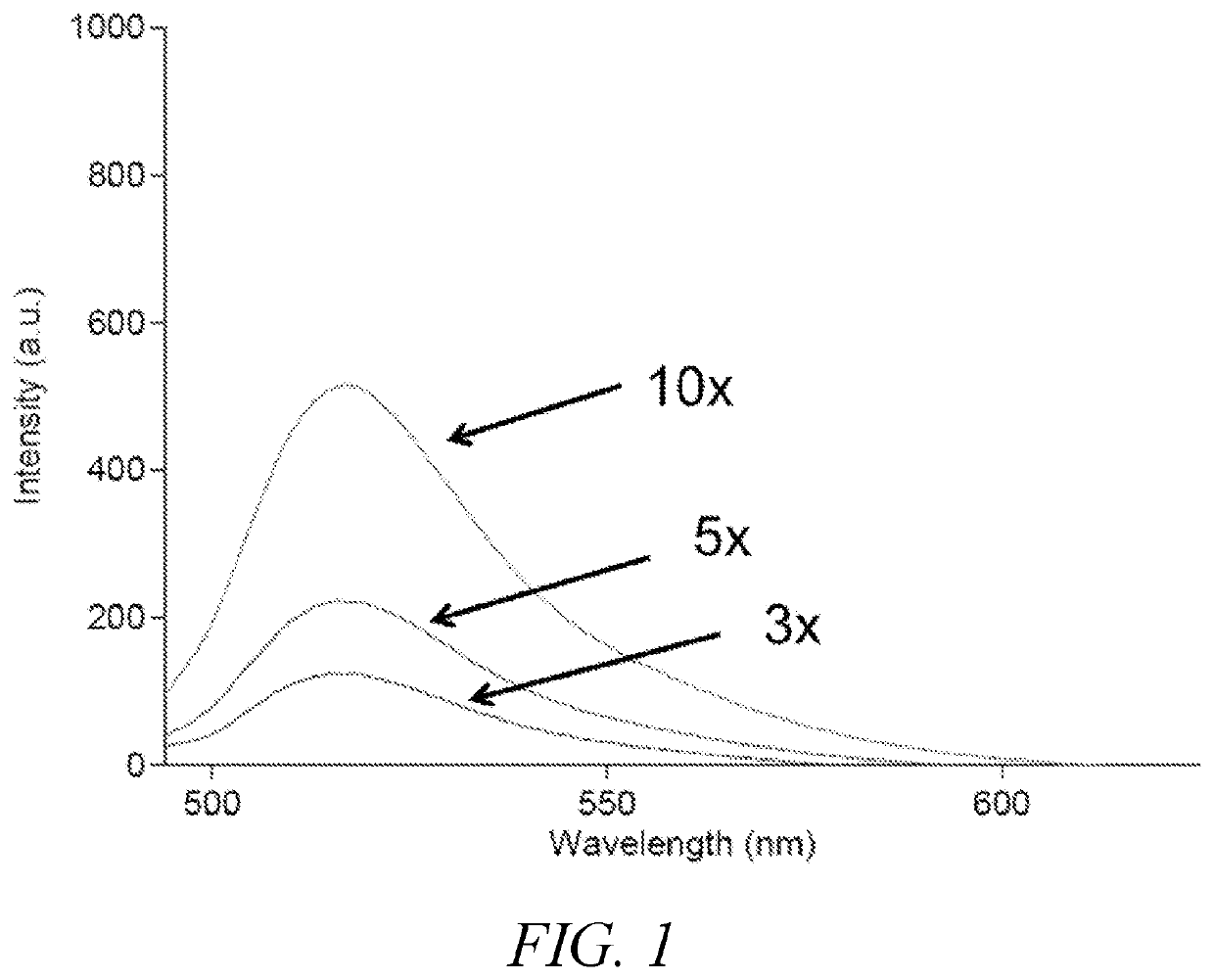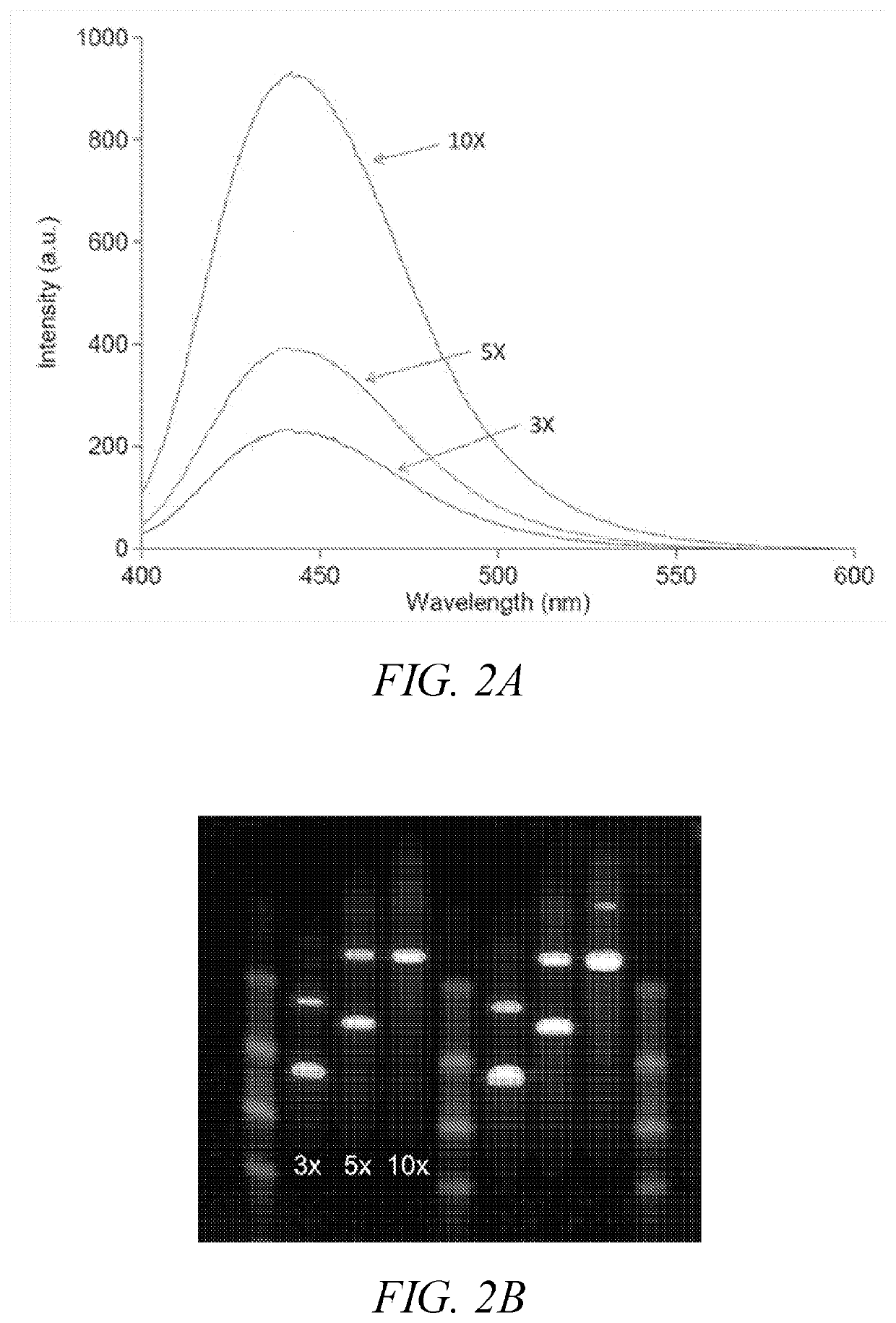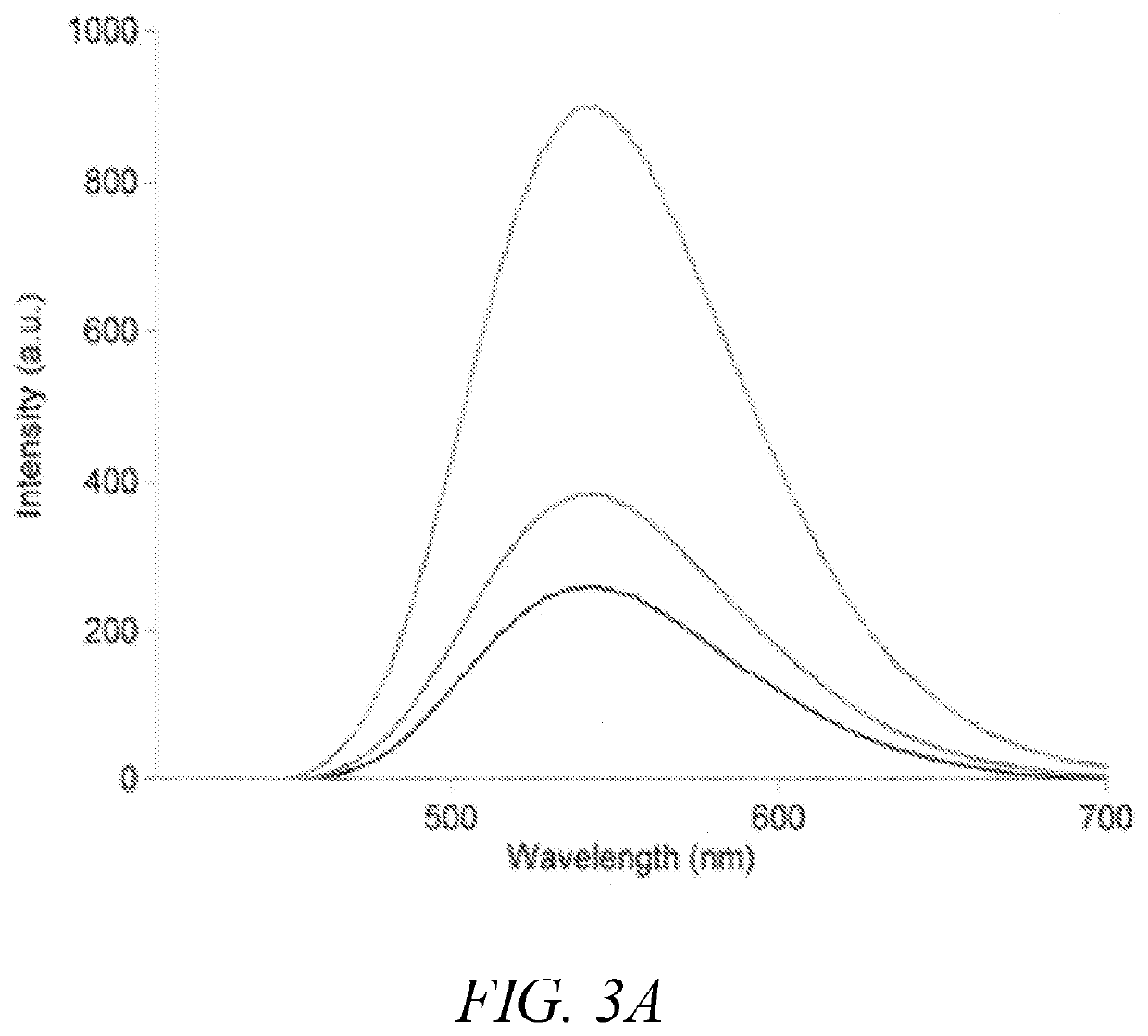Polymeric dyes having a backbone comprising organophosphate units
- Summary
- Abstract
- Description
- Claims
- Application Information
AI Technical Summary
Benefits of technology
Problems solved by technology
Method used
Image
Examples
example 1
Synthesis of Compound II-1
[0371]
Starting Materials
[0372]
DMT Hexaethoxy glycol phosphoramidite (HEG amidite)Polyethyleneglycol 1000 CED Phosphoramidite (PEG amidite) *length of PEG is approximately 25 and may varyFmoc-Amino-DMT C7 Phosphoramidite
[0373]Compounds II-1 was prepared on the DNA synthesizer (AKTA OligoPilot 100) via solid support using standard DNA synthesis techniques (i.e., DMT protected 2-cyanoethyl phosphoramidite) on scales ranging from 14-200 μmol. The polymer was removed from the solid support with ammonium hydroxide (e.g., 28-30%, 3 hours at 55° C.) and lyophilized to a paste. The results of the synthesis are summarized in the table below:
TABLE 3Results of synthesis of Compound II-1Synthetic ScaleMW ObservedYield(μmol)Solid Support(Calculated)(%)14Controlled Pore6291.763Glass(6159.3)150Controlled Pore6291.753Glass(6159.3)30Polystyrene629370(6159.3)200Polystyrene6292.885(6159.3)
example 2
Synthesis of Compounds of Structure I
[0374]The compounds from Example 1 were coupled with desired dye molecules to afford compounds of structure I. With the Fmoc protecting group removed from the amine linker (e.g., using piperidine in DMF), Compound II-1 was then reacted with an appropriately activated dye molecule (i.e., NETS-ester). Reagents for the synthesis are prepared according to the following procedures.
Stock Solution Preparation
[0375]Borate buffer is prepared at 250 mM, pH 10
Dye-NETS solution prepared at 350 mM (300 mg in 1.35 mL DMSO:acetonitrile at 25:75)
Dye Coupling Reaction
[0376]In 50 mL centrifuge tube equipped with magnetic stir bar is placed water, borate buffer, Compound II-1 polymer solution, acetonitrile, triethylamine and dye-NETS solution. The tube is wrapped in aluminum foil and the mixture stirred overnight at room temperature. The dye-NETS compounds were used to afford the desired products according to the Table 4, below:
TABLE 4Results of synthesis of Compou...
example 3
Activation and Antibody Conjugation of Structure I
[0378]
[0379]Representative compounds of structure I (i.e., Compounds I-1, I-2, I-3, I-4, I-5 and I-6) were prepared according to Example 2. The disulfide (i.e., moiety included in R2 as shown in Table 2) was then reduced and functionalized with bis-maleimidoethane (“BMOE”). In parallel, an UCHT-1 antibody was reduced and coupled to the maleimidoethane functionalized compound of structure 1 as in the above reaction scheme in a 5:1 molar ratio of polymer to antibody. The reaction results in a final product having a polymer to antibody ratio of about 1:1 as detected by size exclusion chromatography.
PUM
 Login to View More
Login to View More Abstract
Description
Claims
Application Information
 Login to View More
Login to View More - R&D
- Intellectual Property
- Life Sciences
- Materials
- Tech Scout
- Unparalleled Data Quality
- Higher Quality Content
- 60% Fewer Hallucinations
Browse by: Latest US Patents, China's latest patents, Technical Efficacy Thesaurus, Application Domain, Technology Topic, Popular Technical Reports.
© 2025 PatSnap. All rights reserved.Legal|Privacy policy|Modern Slavery Act Transparency Statement|Sitemap|About US| Contact US: help@patsnap.com



